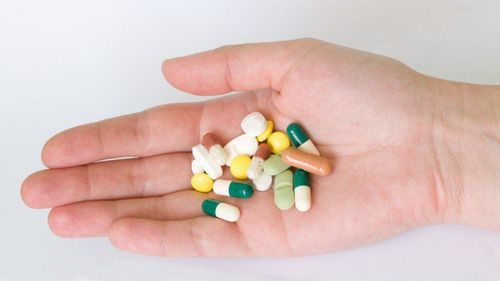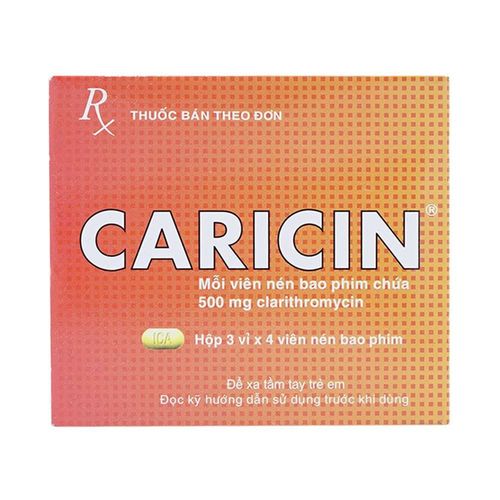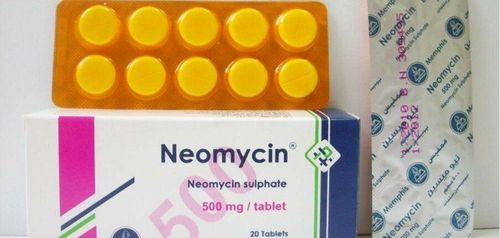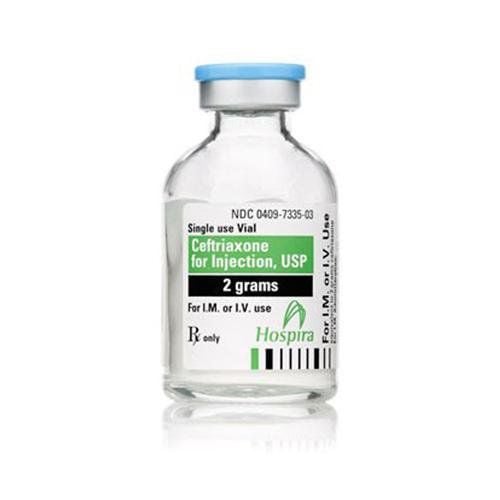This is an automatically translated article.
Burometam is an antibiotic with a broad spectrum of antibacterial activity against many Gram-negative and Gram-positive bacteria, indicated in respiratory, urinary, and genital infections, prophylaxis of infections before surgery and interventional procedures. ,...
1. What is Burometam?
Burometam main ingredient is Ceftriaxone - 3rd generation Cephalosporin antibiotic. The drug inhibits the synthesis of bacterial cell wall thereby preventing the production of bacteria. Burometam is produced as a powder for injection due to poor absorption from the gastrointestinal tract. After injection, the drug is distributed to most body tissues and fluids, into the cerebrospinal fluid and meninges. The drug crosses the placental barrier and is present in breast milk. Most of the drug is metabolised in the liver and eliminated in the urine.
2. Indications of the drug Burometam
Burometam is indicated for serious infections caused by microorganisms sensitive to Ceftriaxone including:
Respiratory tract infections. Ear, nose and throat infections. Genitourinary tract infections. Blood infections, especially purulent meningitis. Prophylaxis of infection after surgery, endoscopic interventions. Musculoskeletal infections. Skin and soft tissue infections. Cholecystitis, biliary tract, peritonitis. Gastrointestinal infections.
3. Contraindications of the drug Burometam
Burometam is contraindicated in the following cases:
Patients who are allergic to the Cephalosporin group. The patient has a history of anaphylaxis to penicillin. Patients who are taking Calcium should not take it with Burometam. Allergy to Lidocaine (do not use lidocaine as solution for injection). Note when using Burometam injection
Patients with impaired liver and kidney function should not take more than 2g/day. Infants and premature infants should avoid taking the drug. The drug crosses the placenta and breast milk and should be avoided in pregnant and lactating women.
4. Drug interactions when used with Burometam
Chloramphenicol. Concomitant use with Gentamicin, Colistin, Furosemide may increase nephrotoxicity. Calcium salts (infusion) and Ringer lactate injection solution used together may increase the risk of precipitation. Vitamin K antagonists. Uric acid eliminators increase the potency of Burometam. Do not take concurrently with typhoid vaccine.
5. Dosage and usage of the drug Burometam
5.1. How to use the drug in the form of powder for injection. Mix with a sufficient amount of distilled water, intramuscularly or intravenously. Or mix with solution for infusion as prescribed by your doctor. 5.2. Dosage Adults and children over 12 years old: 1⁄2 - 1 vial/day; Maximum 2 vials/day. Neonates 15 days old to < 12 years old: 20 - 80 mg/kg/day. Children under 14 days old: 20 - 50 mg/kg/day. Meningitis: 100 mg/kg x 1 time/day, maximum 4g/day. Patients with gonorrhea: Single intramuscular dose of 250 mg/kg. Prophylaxis before surgery: 1⁄2 - 1 vial/time. Intravenous injection at least 30 minutes before surgery.
6. Burometam side effects
Common:
Diarrhea . Itching, red rash at the injection site. Uncommon:
Fever, angioedema. Increased eosinophils, decreased neutrophils, decreased platelets. Rare:
Anaphylaxis . Headache. Blood clotting disorder. Pseudomembranous colitis. Burometam is indicated for the treatment of serious infections caused by microorganisms sensitive to Ceftriaxone. To ensure effective use and avoid side effects, it is necessary to follow the instructions of the doctor and medical staff.
Please dial HOTLINE for more information or register for an appointment HERE. Download MyVinmec app to make appointments faster and to manage your bookings easily.













